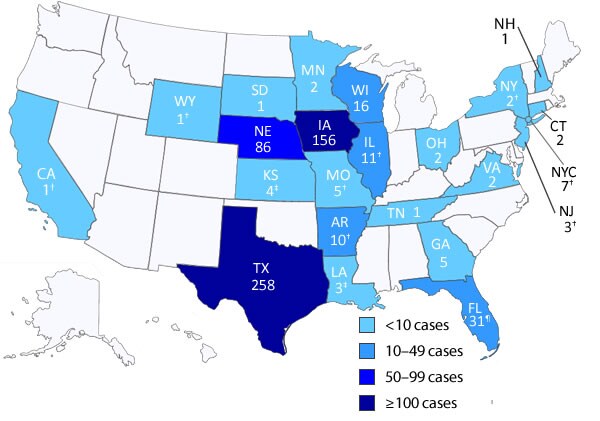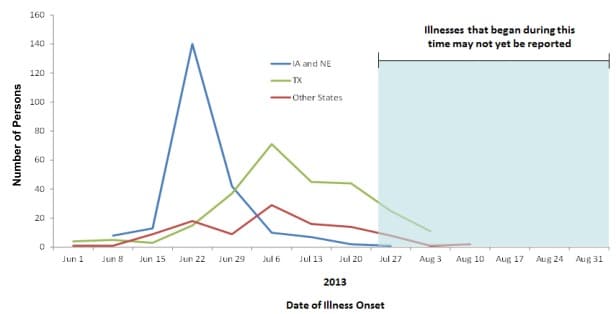
Public health investigators have interviewed all the people with Cyclosporiasis in Texas about their exposures during the 2 weeks before they became ill. These interviews have covered what food they ate and where they ate and purchased their food. On the basis of these interviews, investigators have identified a group (cluster) of ill people who reported eating at the same restaurant. A detailed investigation of this cluster is ongoing. This investigation includes listing the different ingredients in the food that was eaten. People who did not get sick but who also ate meals at the same restaurant on the same days as ill people are also being interviewed. The preliminary analysis of results from this ongoing cluster investigation in Texas does not show a connection to salad mix, leafy greens, and salad mix components produced at Taylor Farms de Mexico.
From August 11-19, 2013, FDA with the cooperation of Taylor Farms de Mexico and Mexican government authorities conducted a thorough environmental assessment at the firm’s processing facility. The team also assessed five farms identified through traceback information from the outbreak investigation. The team found that conditions and practices at these facilities at the time of the assessment were in accordance with known food safety protocols. On August 25, 2013, Taylor Farms de Mexico, with FDA concurrence, resumed production and shipment of salad mix, leafy greens, and salad mix components to the United States.
The findings in Texas differ from those from earlier investigations in Iowa and Nebraska. In those states investigators linked cyclosporiasis cases acquired after eating in one of multiple restaurants to eating a bagged salad mix from Taylor Farms de Mexico. It is not unusual to recognize outbreaks that happen in the same season but are due to different foods. Not all cases during the same time of year are necessarily caused by the same exposure.
For example, during a several-month period in 1997, there were three separate and unrelated outbreaks of cyclosporiasis caused by different fresh produce items from various sources. Strong evidence from epidemiologic investigations led to the recognition that the outbreaks were separate and unrelated. Although the investigation of cases in 2013 is ongoing, available evidence suggests that not all of the cases of cyclosporiasis in the various states are directly related to each other. CDC continues to work with state and local partners and FDA to investigate clusters of illness, food exposures, and sources of food items.
No laboratory tests are available yet that can distinguish different strains of the parasite Cyclospora cayetanensis. CDC and other institutions are working on developing new molecular tools that could distinguish one strain from another. These tools would help public health investigators more quickly determine whether cases of Cyclospora infection are linked. These tools could also be useful for linking a possible source of infection to illnesses in people.
As of August 23, 2013 (5pm EDT), a total of 610 ill persons with Cyclospora infection have been reported from 22 states. Since the last update, 1 additional ill person was reported.
Ill persons range in age from less than one year to 92 years, with a median age of 51 years. 55 percent of ill persons are female. Among 581 ill persons for whom information is available, 43 have reported being hospitalized. No deaths have been reported.
Illnesses that occurred after July 17, 2013, might not yet have been reported because of the time it takes between when a person becomes ill and when the illness is reported. This could take up to 5 to 6 weeks.

No comments:
Post a Comment